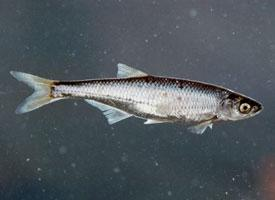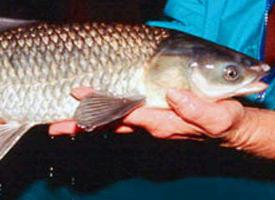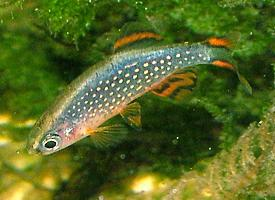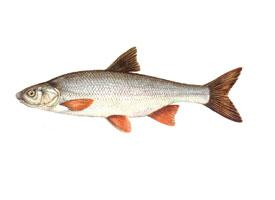
Váhy a míry
| Délka | od 10 do 20 cm |
|---|---|
| Hmotnost | od 10 do 60 g |
Biologická data
| Délka života | 8 r |
|---|
Popis zvířete
The Common bleak (Alburnus alburnus) is a small, freshwater fish that is part of the Cyprinidae family, which is widespread across Europe and Asia. This species is known for its adaptability to various aquatic environments, thriving in everything from slow-moving rivers and streams to lakes and reservoirs. Its habitat flexibility, combined with a high reproductive rate, has made the Common bleak a prevalent species in its native range.Physically, the Common bleak is a slender fish, with a body that is elongated and somewhat laterally compressed, allowing for quick, agile movements in the water. Adults typically reach lengths of 15 to 20 centimeters, though some specimens can grow slightly larger. The fish is characterized by its silvery, almost translucent body, which reflects light beautifully and provides it with a degree of camouflage against predators when viewed from below. The dorsal and anal fins are positioned far back on the body, and the caudal fin is forked, contributing to its efficient swimming capabilities.
One of the most distinctive features of the Common bleak is its large, prominent eyes, which are adapted to its surface-dwelling lifestyle. These eyes give the fish excellent vision, allowing it to spot insect prey at the water's surface. Indeed, the diet of the Common bleak consists mainly of small invertebrates, such as insects and their larvae, which it skillfully captures with its upturned mouth. This diet is supplemented by plankton and algae, making the bleak an omnivorous species.
The breeding season for the Common bleak occurs in late spring and early summer, when water temperatures rise. During this period, females release thousands of eggs into the water, which are then fertilized externally by males. The eggs are adhesive and attach to vegetation and other substrates, where they remain until hatching. This high fecundity is one of the reasons for the species' abundance.
Despite its small size, the Common bleak plays a significant role in its ecosystem. It serves as a vital food source for larger predatory fish, such as pike and perch, as well as for fish-eating birds. Furthermore, its feeding habits help control the populations of aquatic insects and contribute to the overall health of its habitat.
In some regions, the Common bleak is also of interest to anglers, particularly those specializing in match fishing. Although not prized for its culinary qualities, the bleak is sought after for its fighting spirit and the challenge it presents on light tackle.
In conclusion, the Common bleak (Alburnus alburnus) is a fascinating fish that, despite its modest size, is an integral part of the freshwater ecosystems it inhabits. Its adaptability, diet, and reproductive strategy have ensured its success across a wide geographical range, making it a key species in understanding freshwater biodiversity and ecosystem dynamics.
Podobná zvířata
Nové fotografie zvířat
Top 10 zvířat
- Chinese water dragon (Physignathus cocincinus)
- Dolphin gull (Leucophaeus scoresbii)
- Japanese macaque (Macaca fuscata)
- Galápagos tortoise (Geochelone nigra complex)
- Colombian red howler (Alouatta seniculus)
- Sea urchins (Echinoidea)
- Barbary macaque (Macaca sylvanus)
- Moustached guenon (Cercopithecus cephus)
- Diana monkey (Cercopithecus diana)
- Angolan talapoin (Miopithecus talapoin)


